Cursor AI
Introduction to Cursor
Demo Installation and Setup
In this guide, we’ll walk through installing Cursor, the AI-powered, cross-platform code editor, on Windows, macOS, and Linux. By the end, you’ll have Cursor up and running with your preferred account, extensions, and settings across all environments.
Installing on Windows
Download the Windows installer from cursor.com.
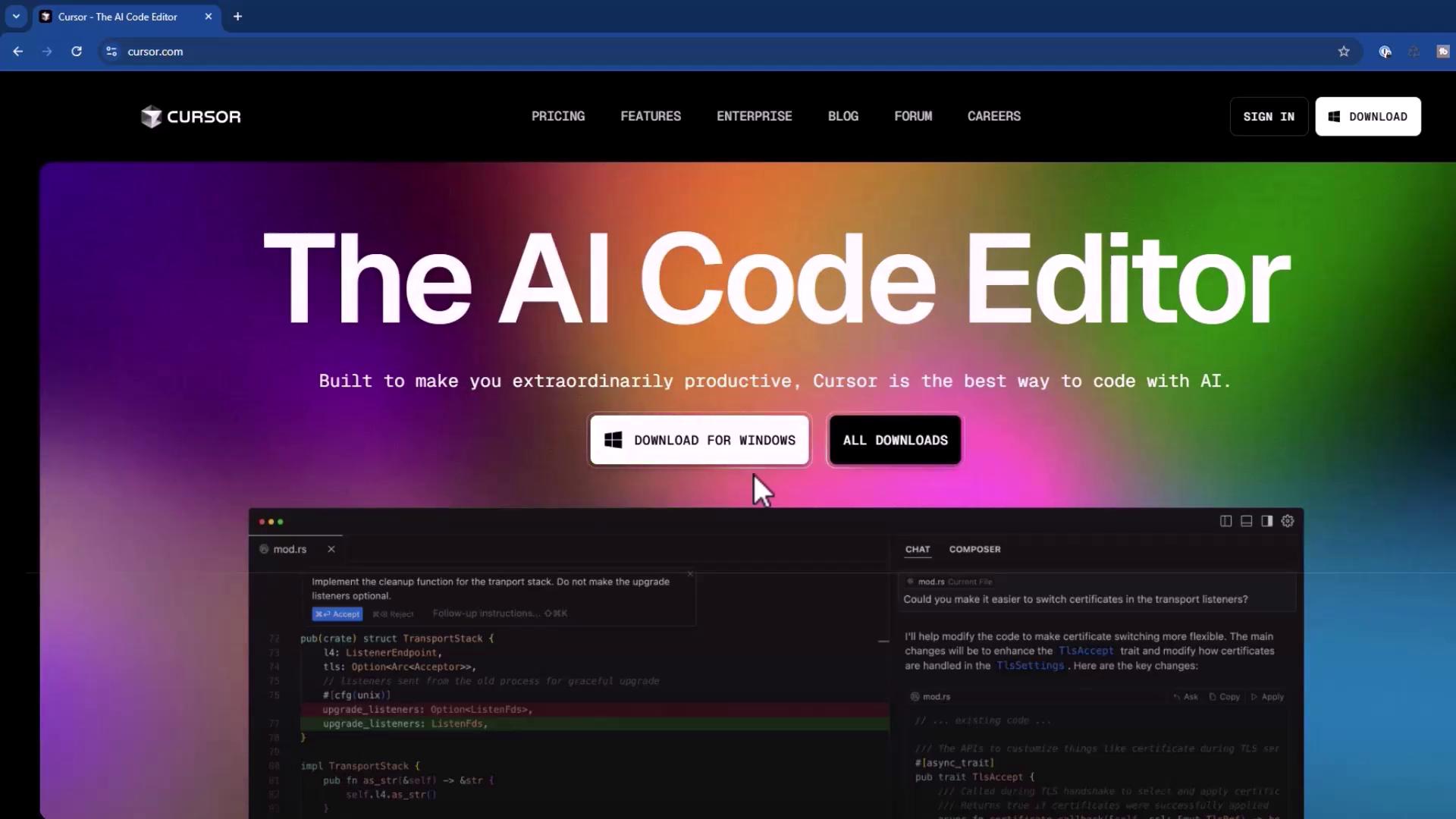
Run the installer and accept the license agreement to proceed.
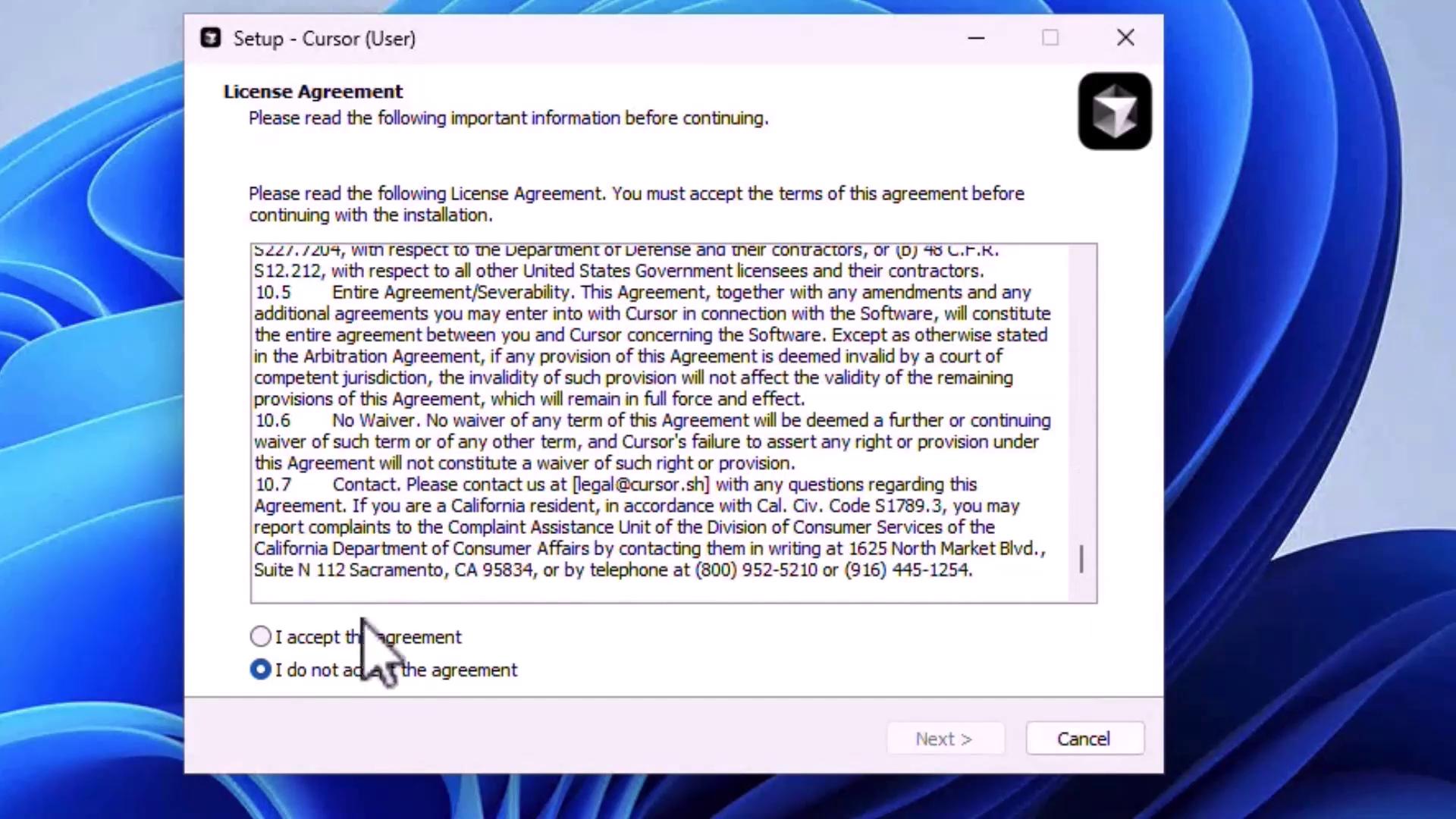
Select any additional tasks, such as:
- Creating a desktop icon
- Adding an “Open with Cursor” context menu
- Registering Cursor as the default editor
- Adding Cursor to the system
PATH
Then click Next.
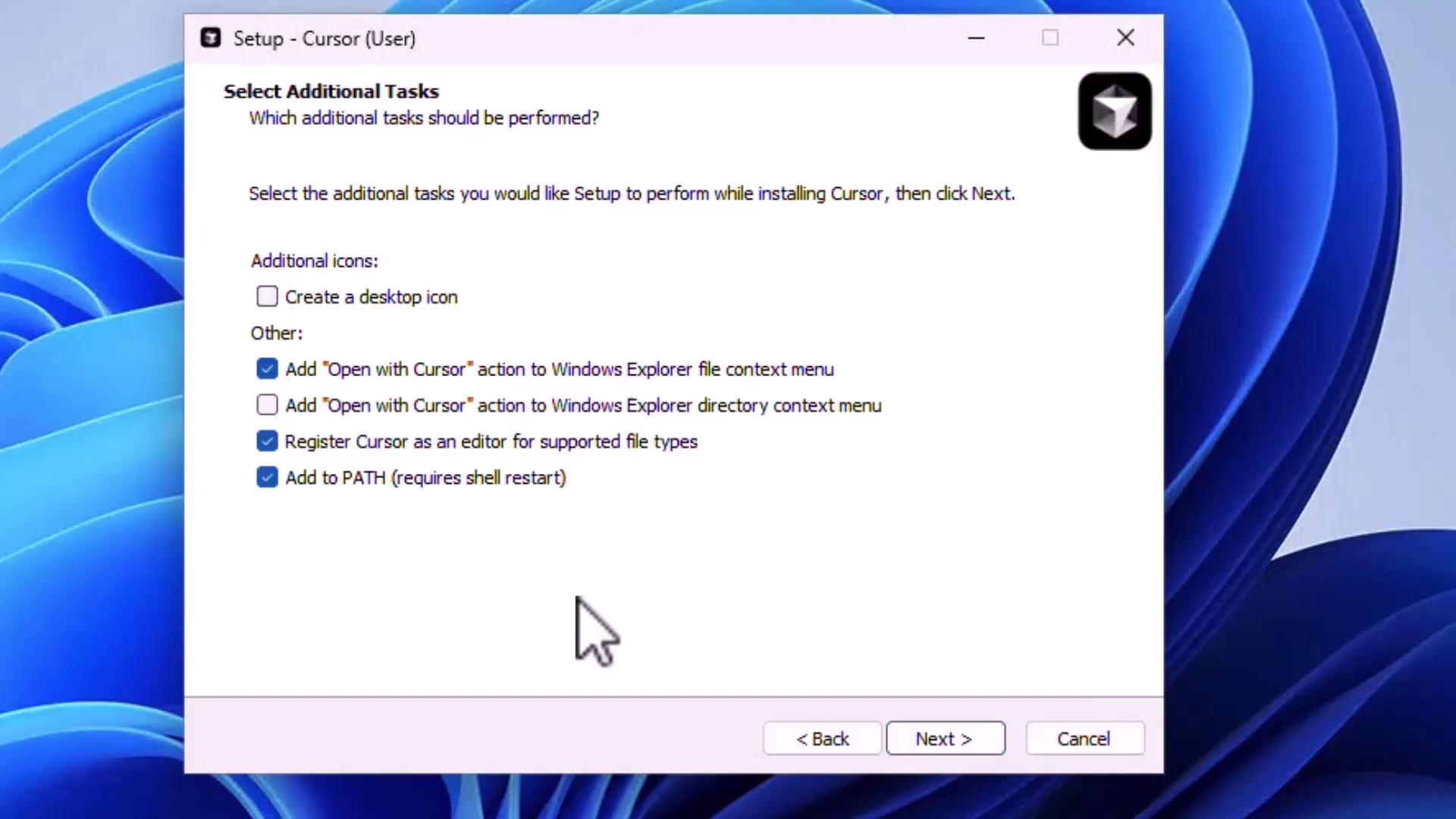
Wait for installation to complete, then click Finish to launch Cursor.
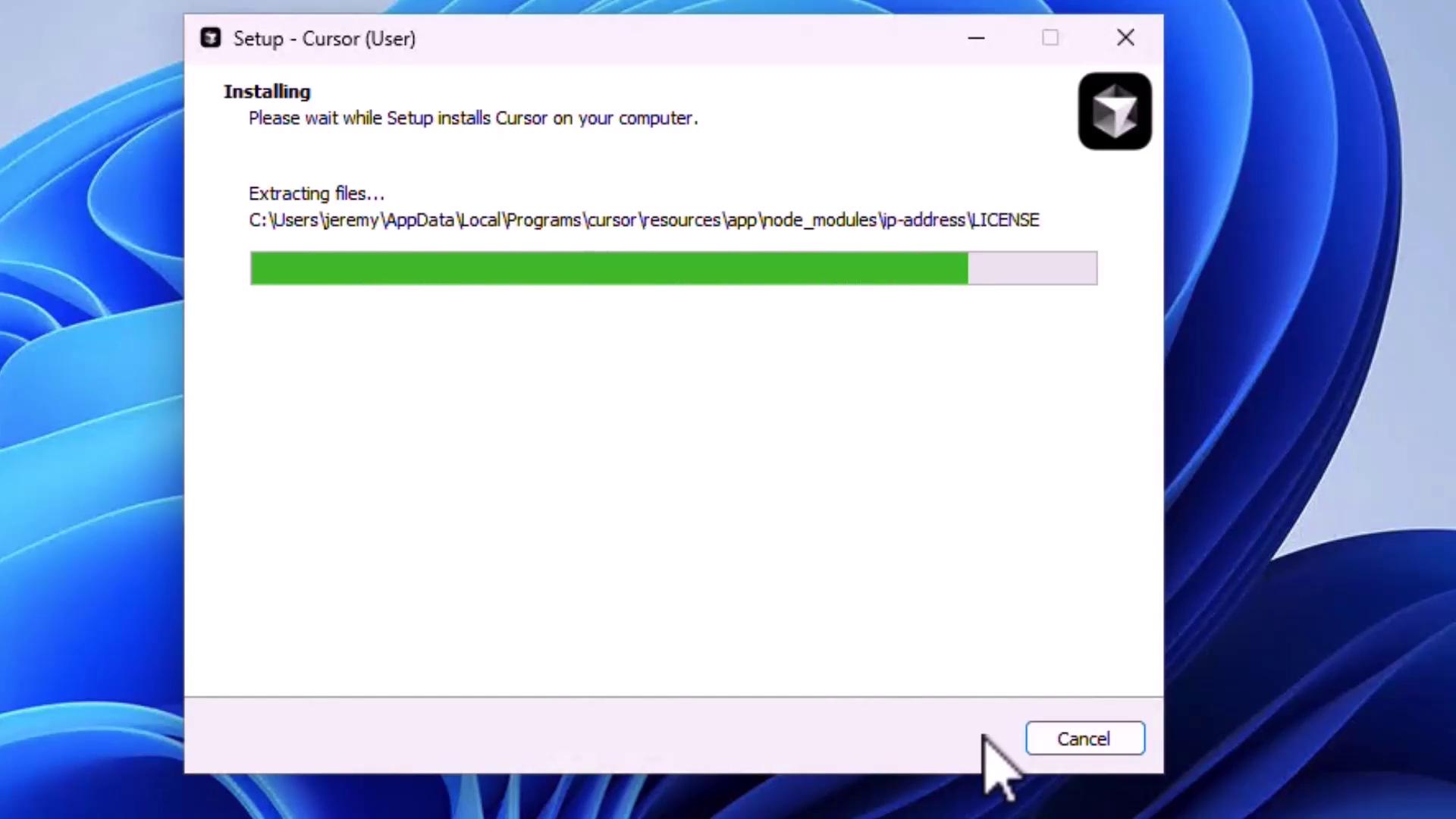
On first launch, sign in with your preferred account.
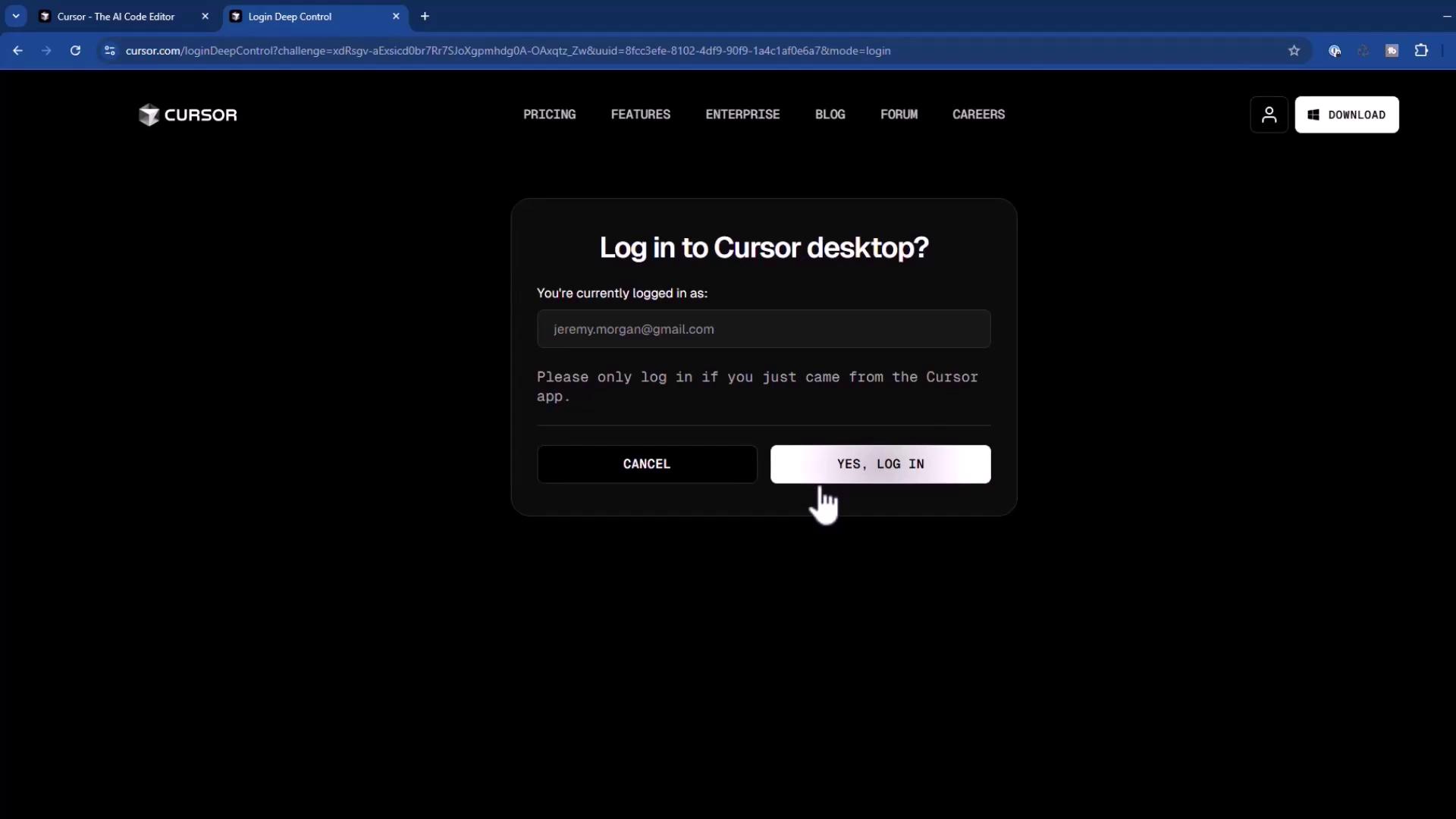
Once authenticated, you’ll see the main dashboard where you can:
- Open an existing project
- Clone a repository
- Connect via SSH
Installing on macOS
Download the macOS .dmg from cursor.com.
Double-click to mount and drag the Cursor icon into Applications.
(Optional) Add Cursor to your Dock for quick access.
Open Cursor; macOS will prompt you to confirm launching an app downloaded from the internet.
Configure initial settings:
- Keyboard shortcuts
- AI language preferences
- Codebase-wide indexing
- Install the
cursorshell command for terminal access
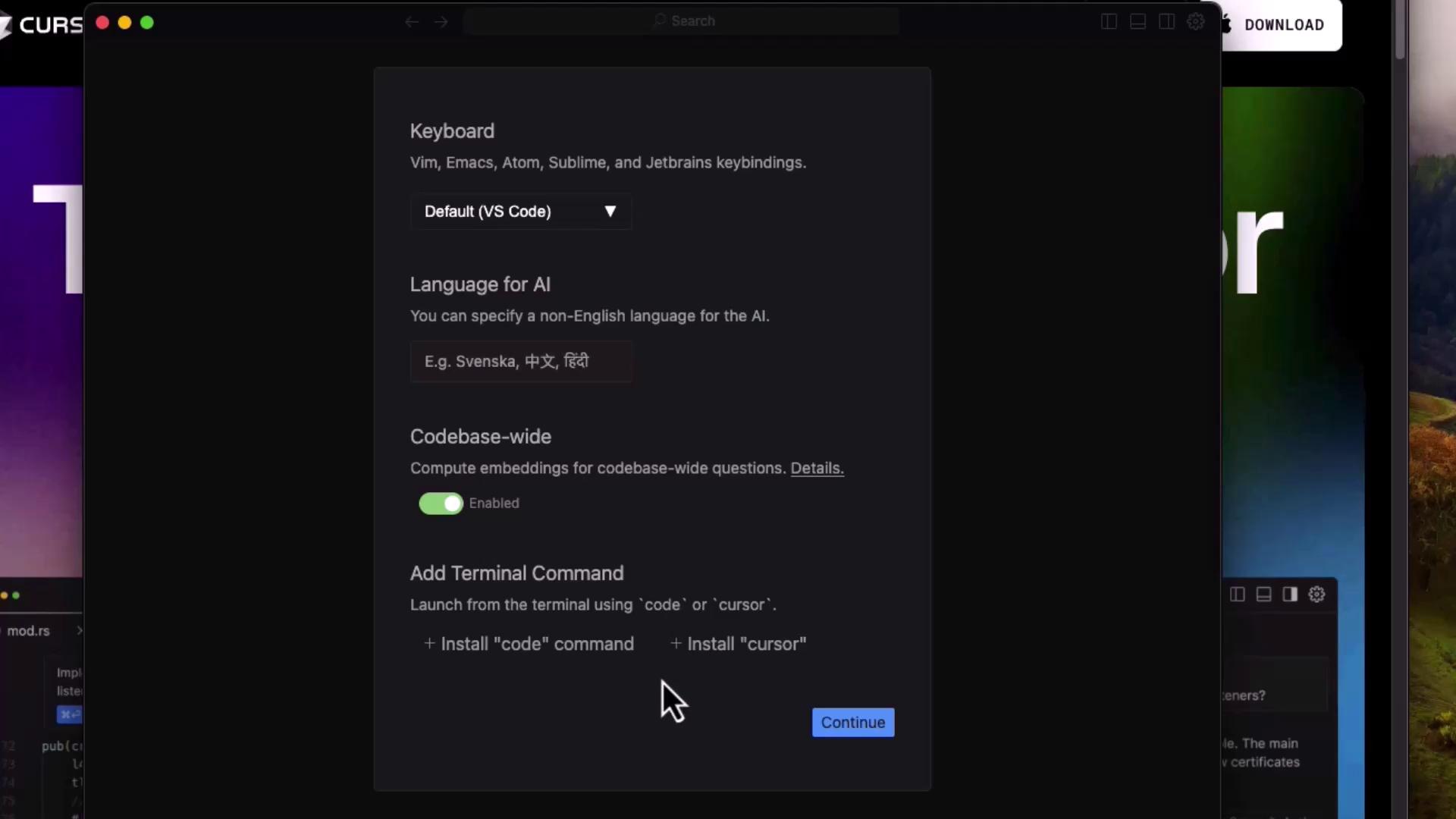
After installing the shell command, you’ll see a confirmation popup.
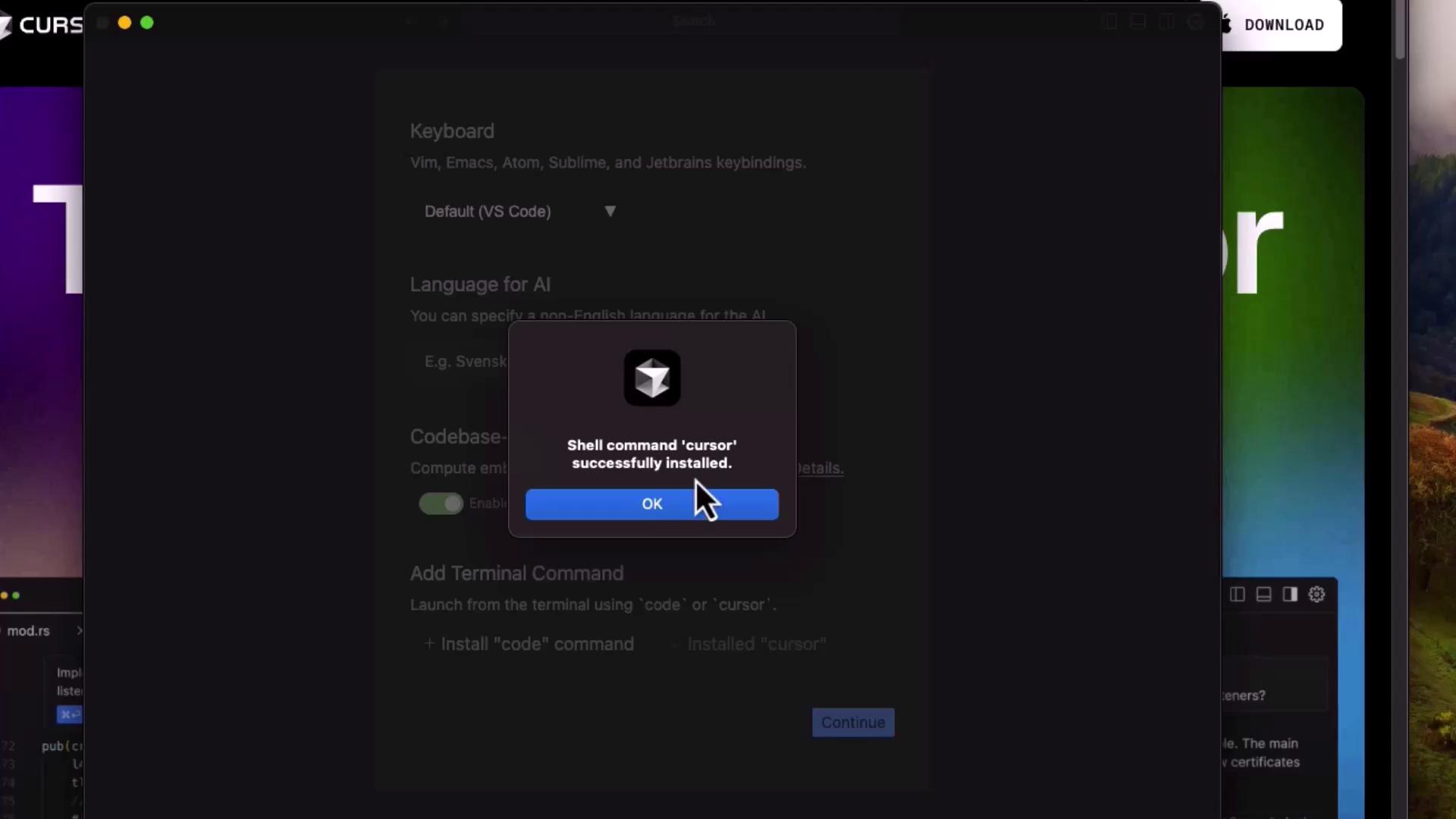
Choose whether to import your existing VS Code extensions, settings, & keybindings or start fresh.
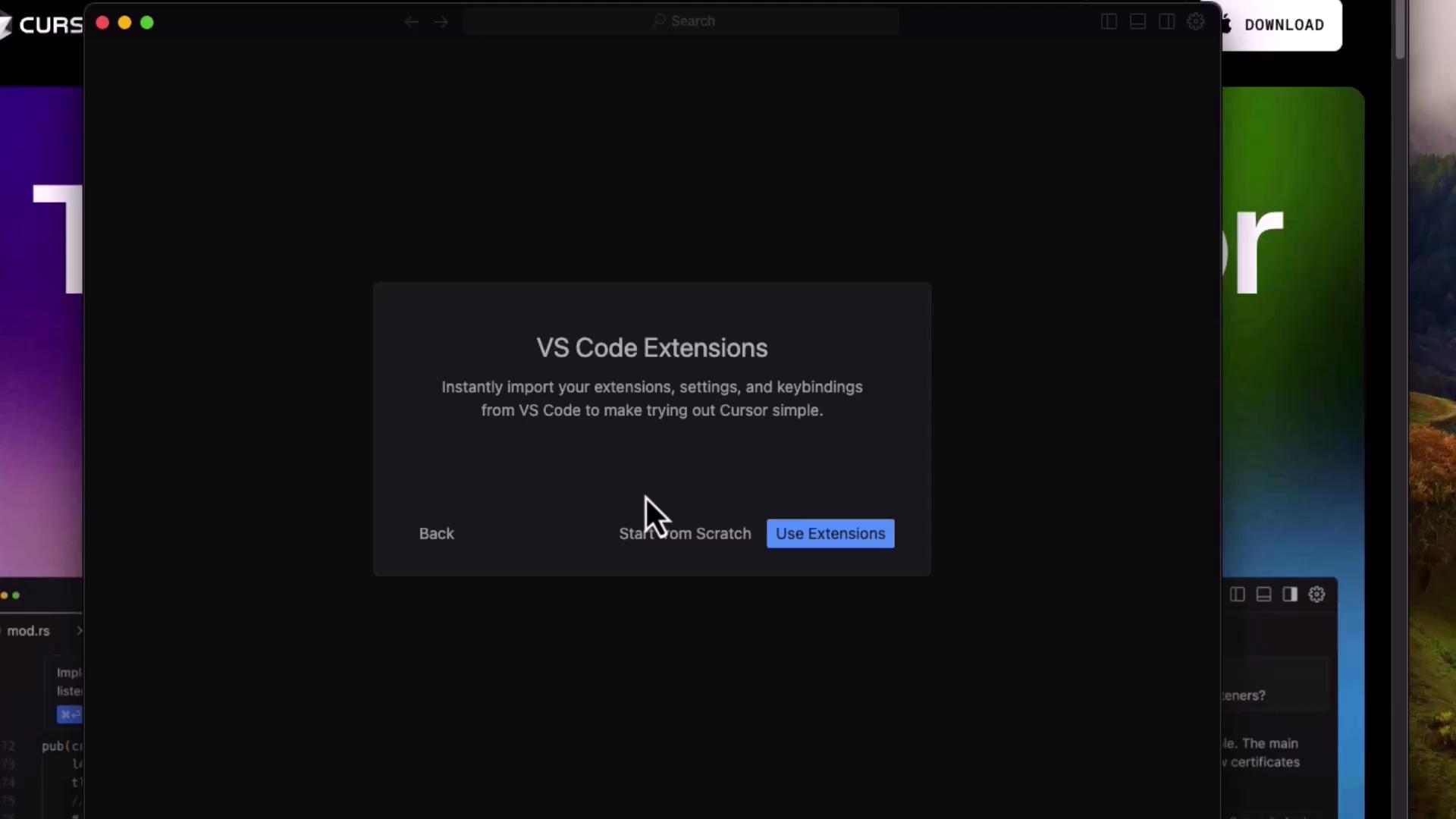
Sign in via your browser and allow the system prompt to open Cursor.
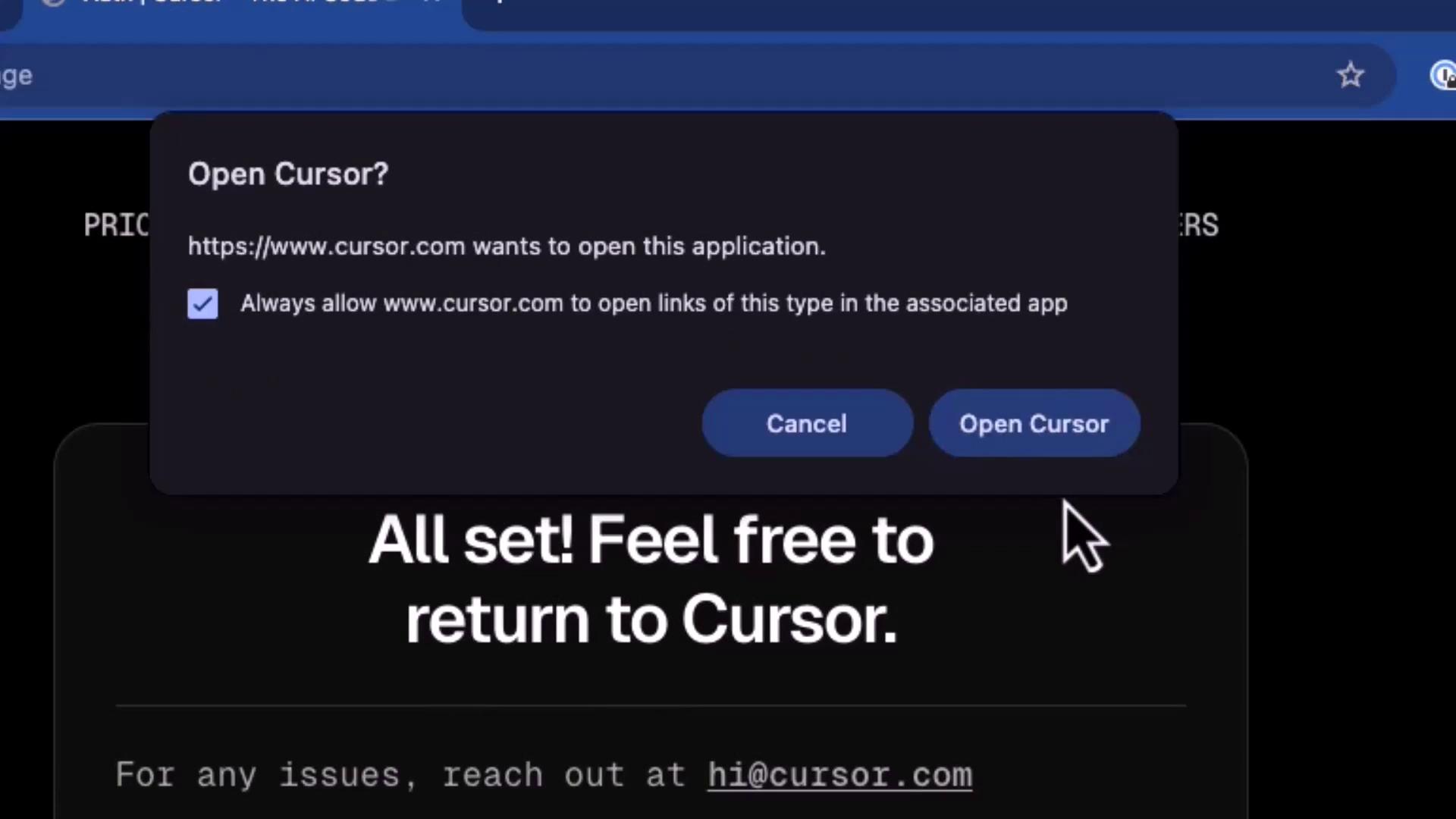
After logging in, customize your theme, account, and privacy settings on the main interface.
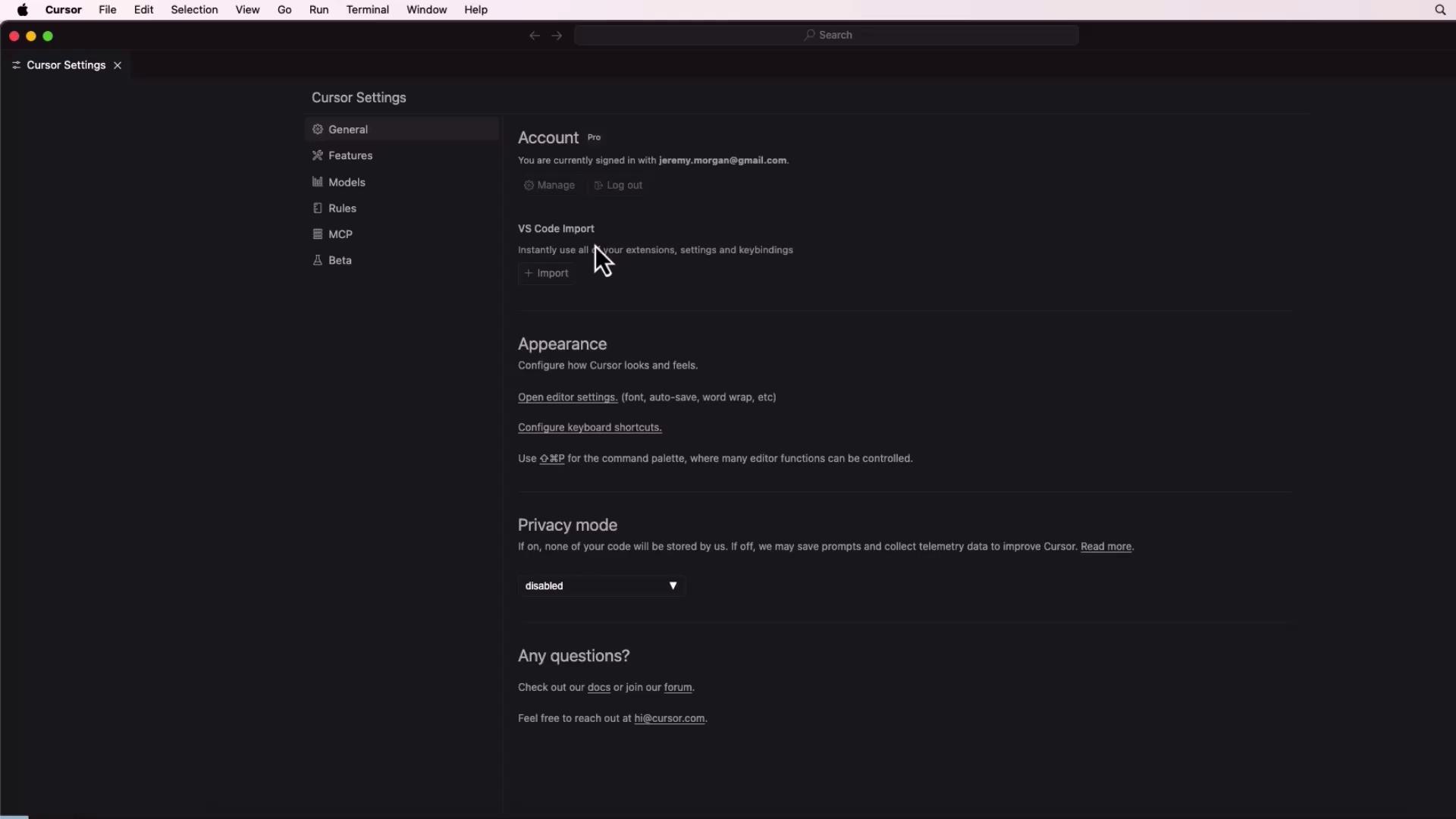
Installing on Linux
Cursor is distributed as an AppImage on Linux platforms (e.g., Ubuntu).
Download the AppImage from cursor.com and place it in your Downloads or Apps directory.
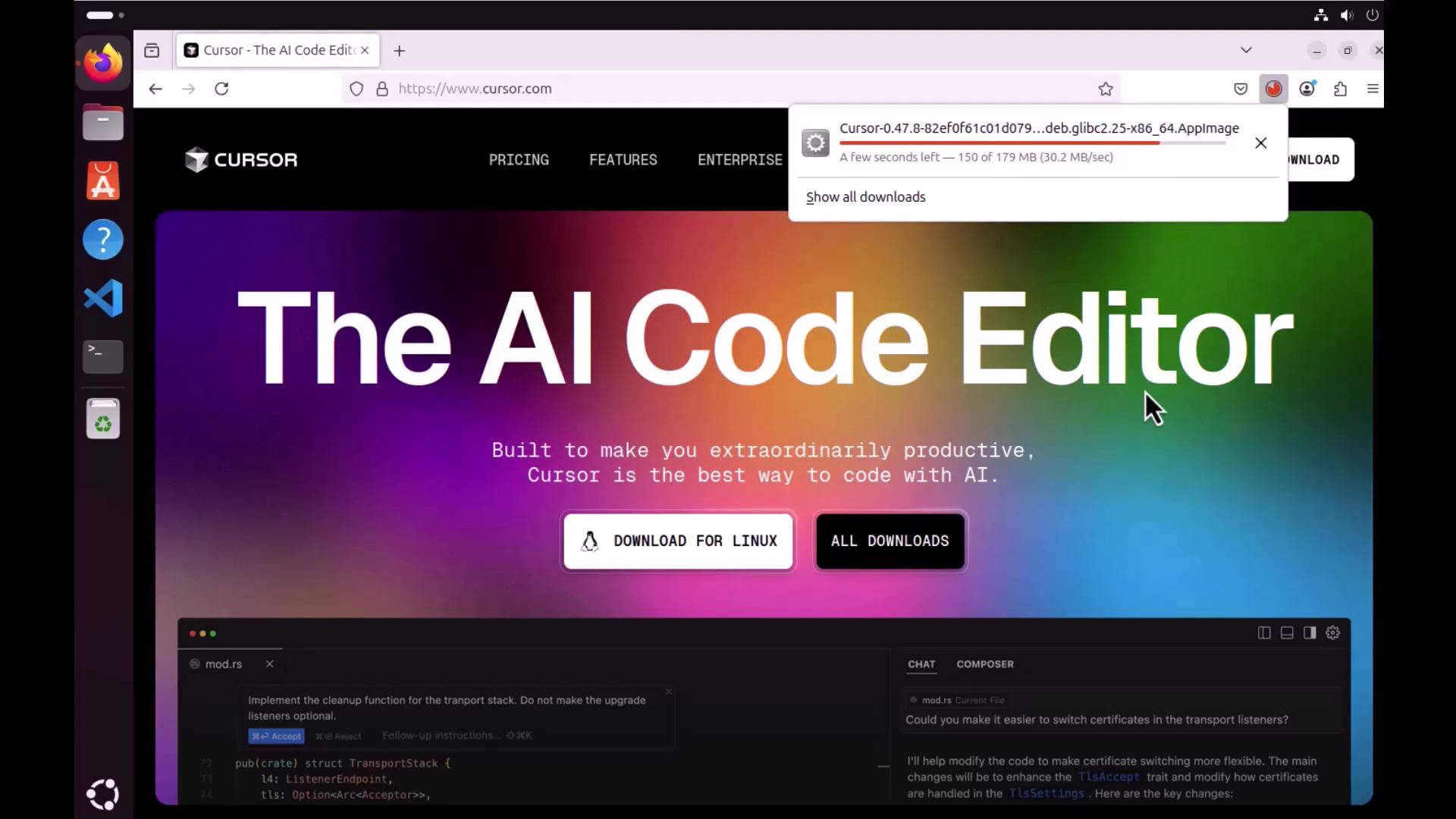
Make the AppImage executable:
Graphical: Right-click → Properties → Permissions → Tick Allow executing file as program
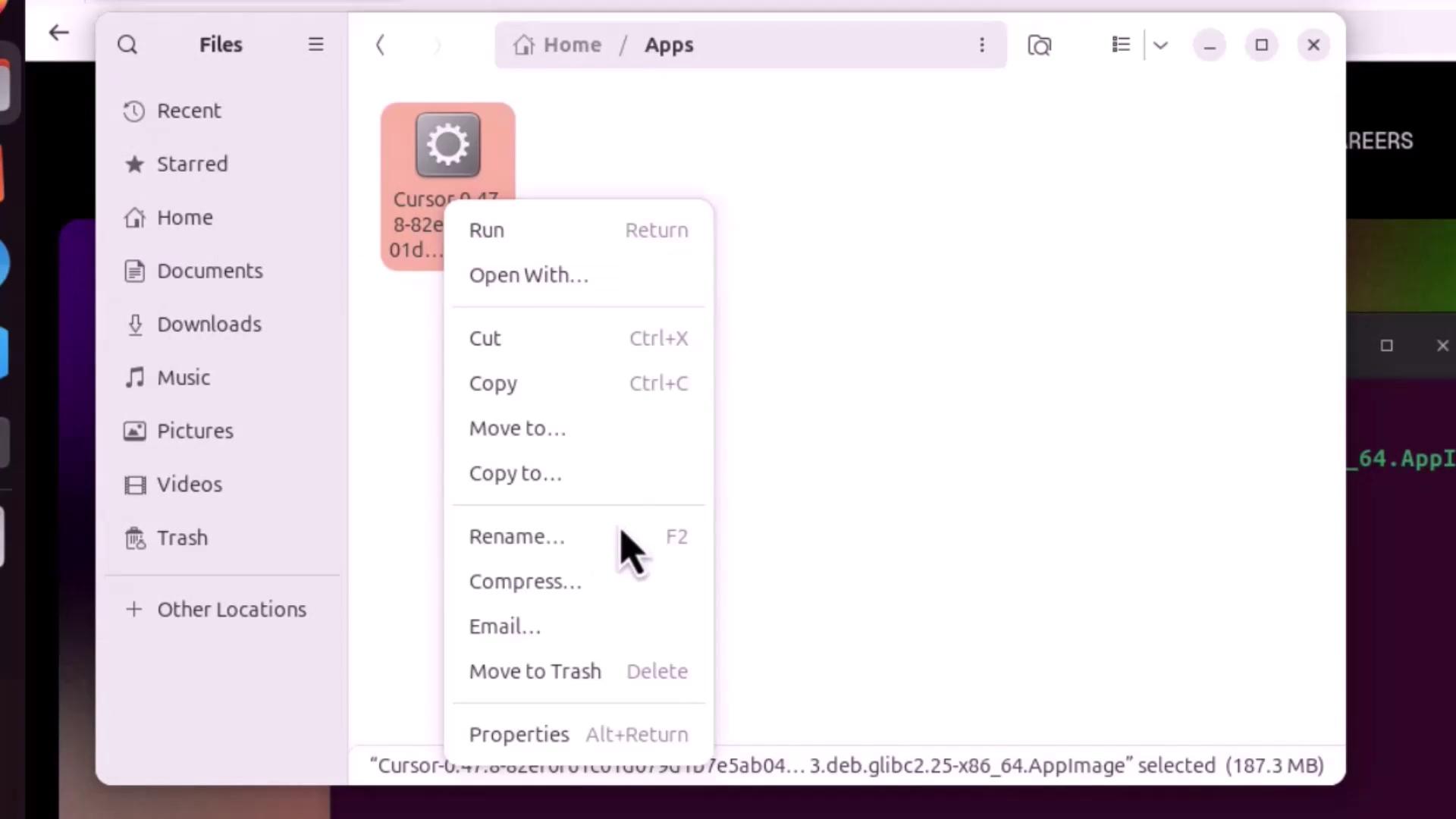
Terminal:
cd ~/Apps chmod +x Cursor.AppImage ./Cursor.AppImage
Missing FUSE Library
If you encounter an error about libfuse.so.2, install FUSE before launching:
sudo apt-get update && sudo apt-get upgrade -y
sudo apt install libfuse2
./Cursor.AppImage
On first launch, configure your preferences and import VS Code extensions just like on macOS.
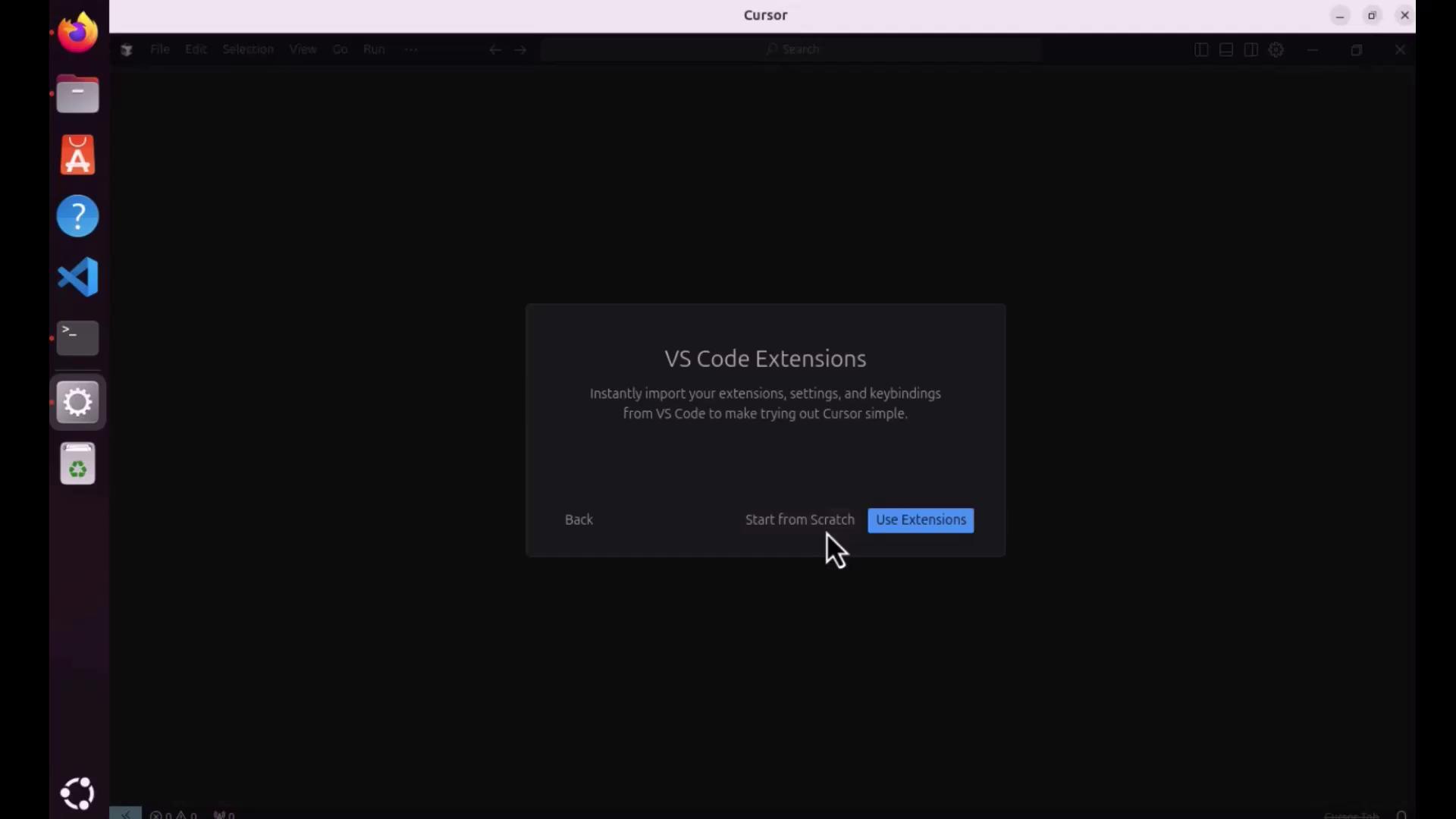
Sign in to your Cursor account to sync settings and projects.
Quickstart: Verify Your Setup
Cursor’s integrated terminal adapts to each OS:
- Windows: PowerShell, Command Prompt, or WSL
- macOS: Z shell (zsh)
- Linux: Bash
Create a simple Python project to ensure everything is working:
# hello_world.py
def main():
print("Hello, World!")
if __name__ == "__main__":
main()
Run it in Cursor’s terminal:
python3 hello_world.py
# Output:
# Hello, World!
On Ubuntu, you can pin Cursor to the Dock (Dash) by right-clicking its icon and selecting Add to Favorites.
References
Watch Video
Watch video content